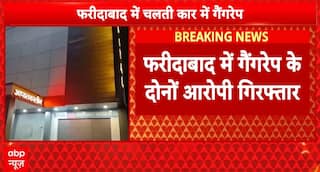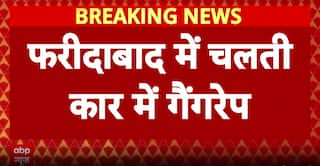How Nitish Kumar's Bihar Experiment Hints At A Calculated 2024 Strategy And Where Congress Stands In The Picture

In a quick turn of events in August 2022, Bihar Chief Minister Nitish Kumar did yet another U-turn to return to the ‘secular’ fold. Political manoeuvers are a matter of meticulous planning and execution. As such, there was more to the latest realignment in Bihar politics than an apparent détente reached between arch-rivals Rashtriya Janata Dal and the Janata Dal (United). It was believed that the Congress, though a minor partner, was the critical glue that triggered changes in state politics with the larger aim to galvanise the opposition for the 2024 battle.
There have been many speculations since on the specifics of the agreement reached between RJD, JD(U), and Congress on leadership issues — both at the national level and in the state.
Earlier this year, Nitish Kumar announced that his deputy and RJD leader Tejashwi Yadav would lead the alliance campaign in the 2025 Bihar assembly polls. In politics, there are many a slip between the cup and the lip, but this has by far been the most unambiguous expression of interest by Kumar to shift base to Delhi from Patna. The announcement has not been without minor hiccups as others in contention within — like former Union minister Upendra Kushwaha — decided to chart a separate course.
It is, however, not clear whether the Bihar bonhomie between Nitish and Lalu was engendered by some commitment on the part of the Congress as well to accommodate Nitish Kumar’s political ambitions at the national level. Having spent almost two decades at the helm of the state, Nitish has the potential to offer some missing links to the opposition campaign against the BJP. He has more than two years of administrative experience both at the centre and in the state. He has never been embroiled in any major controversy or a corruption case. Also, Nitish is a backward leader from a Hindi heartland state, who can challenge the BJP’s successful hold over non-Yadav backward communities — especially the Kurmis who are spread across north, central, and western India.
The Bihar experiment was initiated against the backdrop of Congress’ humiliating performance in UP and a string of revolts by a section of the party leadership led by Ghulam Nabi Azad.
A lot of water has flown under the Gandhi Setu since.
Congress’ ‘Call To Action’ As Restive Allies Seek Declaration Of Intent
The grand old party has tasted one of the rare victories in the recent past in a direct contest with the BJP in Himachal Pradesh. The Himachal campaign has also been a pilot project of sorts for the Congress to offer an alternative socioeconomic narrative to the BJP’s stand on subsidy or ‘rewri-culture’. Rahul Gandhi’s attempt at an image makeover through the national wide padyatra also yielded desired results. And lastly, the Hindenberg-Adani saga has provided fresh ammunition to the Congress to attack the BJP on issues related to governance.
While a re-couped Congress met at the Raipur plenary, both Nitish Kumar and Tejashwi Yadav used veiled statements to remind the Congress of Bihar’s understanding “urging opposition to unite” before it’s too late. Having kept his part of the promise by anointing Tejashwi as the CM candidate, Nitish Kumar was obviously urging the Congress to keep its part of the bargain — if ever there was any.
The Congress responded to the Patna missive with a ‘call to action’ from the Raipur conclave by offering to work with ‘like-minded political parties', but did not spell out the coutours of the understanding or how much space it is willing to concede to the allies.
The party though endorsed Nitish Kumar’s call for a caste census but did not mince words in reminding the Mandal(ite) political parties of having never "compromised with the BJP/RSS and its despicable politics".
The message to Nitish Kumar and others is clear. It means Congress wants more time to gauge and access its ability to challenge the BJP at the hustings.
As a result, it may take some more time for the leadership of the anti-BJP front to crystalise and would depend on the outcome of four state assembly polls this year.
The results in Karnataka, Rajasthan, Chhattisgarh and Madhya Pradesh, where the party is in a direct contest with the BJP, may well determine how much leadership space the grand old party would concede to the non-BJP regional parties in the run-up to the 2024 Lok Sabha polls.
The author is an independent journalist who writes on politics and policy.
[The opinions, beliefs, and views expressed by the various authors and forum participants on this website are personal and do not reflect the opinions, beliefs, and views of ABP Network Pvt. Ltd.]


























